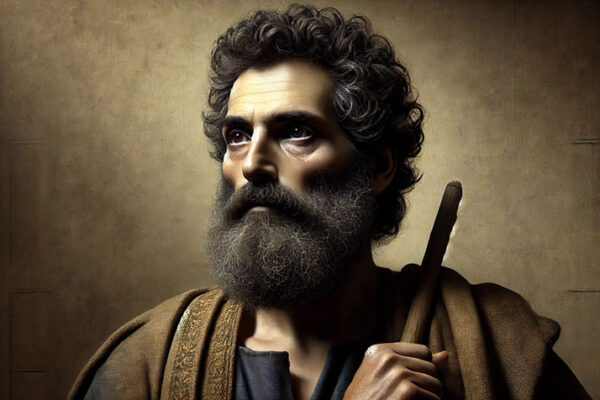Matthew the Apostle
Who was Matthew the Apostle?
Matthew, also known as Levi, was one of the twelve disciples of Jesus. He was a tax collector by trade. Tax collectors were often despised by their fellow Jews because they had a reputation for corruption and greed. As an eye witness of Jesus’ life and ministry, he was one of the four Gospel writers, authoring the Gospel of Matthew.
Call to Discipleship
According to Matthew 9:9, Jesus saw Matthew sitting at the tax collector’s booth and said to him, “Follow me.” Without hesitation, Matthew got up and followed Jesus.
Significant Characteristics
Receptive to Change: Matthew’s decision to leave his tax booth and follow Jesus suggests a readiness in Matthew’s heart to change and embrace a new way of life.
Evangelistic Heart: After he began following Jesus, Matthew hosted a dinner at his house and invited his old friends indicating an eagerness to introduce Jesus to them. When some Pharisees commented on Jesus eating with sinners, there was an opportunity for Jesus to communicate his mission, which was to call sinners to repentance.
Attention to Detail: Matthew’s background as a tax collector likely honed his skills in record-keeping and attention to detail. This trait is reflected in the Gospel of Matthew, which is known for its meticulous account of Jesus’ life and teachings.
Contributions to the Church
Authorship of the Gospel of Matthew: Matthew’s most significant contribution is his authorship of the Gospel of Matthew. As one of Jesus’ disciples, Matthew provided a firsthand account of Jesus’ ministry, including His teachings, miracles, and interactions with people. Matthew’s Gospel is particularly important in demonstrating how Jesus fulfilled Old Testament prophecies about the Messiah. This helped early Jewish Christians understand Jesus’ role in God’s plan and provided a bridge between Judaism and Christianity. Matthew’s Gospel preserves many of Jesus’ parables and teachings that are not found in the other Gospels, contributing to a fuller understanding of Jesus’ message.
Missionary Travels: There is not much information about Matthew’s missionary journeys through Biblical accounts, but according to the legend, Matthew could have visited various places throughout his life, including Persia and Parthia, the Caspian Sea, Ethiopia, Macedonia, and even Syria. Most records talk about him doing the typical things Apostles did during their travels, like miracles, preaching the Gospel, and founding churches.
Martyrdom
The manner of Apostle Matthew’s death is not definitively known but the most commonly accepted tradition suggests that Matthew was martyred, but the details vary. One tradition holds that Matthew was martyred in Ethiopia, where he had been preaching. According to this account, he was killed by being either stabbed, impaled, or beheaded. This is the most widely circulated account and is mentioned in some early Christian writings. Another less common tradition states that Matthew was burned to death.
Testimony & Legacy
Matthew is a testimony of someone whose life went from being a tax collector (or sinner) to a follower of Jesus and eventually an apostle and Gospel author.















